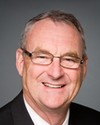First, I don't agree with the premise of your question.
In terms of the expenditures the Government of Canada makes, we can isolate the 2% cap issue that relates to some of the expenditures. I'm happy to talk about that.
At the end of the day, the reality is that the Government of Canada expends $10.2 billion on programs and services that are largely directed to 448,000 on-reserve citizens in this country. It is a very significant amount of money. First and foremost, we need to ensure those dollars are well targeted and well expended and that we are getting results. We're working on that.
In addition, in terms of the 2% cost driver analysis you're talking about, I made the point earlier that it does not reflect all of the other expenditures that have been built into the last two budgets of this Conservative government, which provide for increases in expenditures in targeted areas where we wish to see results, and that includes women, children, and education.
The $10.2 billion therefore reflects other expenditures that are not capped in any way and have been put forward as single approval payments to deal with many of these issues.
The other assumption that underlies your concern relates to the percentage of the cost of governmental services in first nations that should be borne by the Government of Canada. Is it 100 cents on the dollar? Do you advocate a situation where 100 cents on every dollar expended by a first nations government comes from the Government of Canada?







